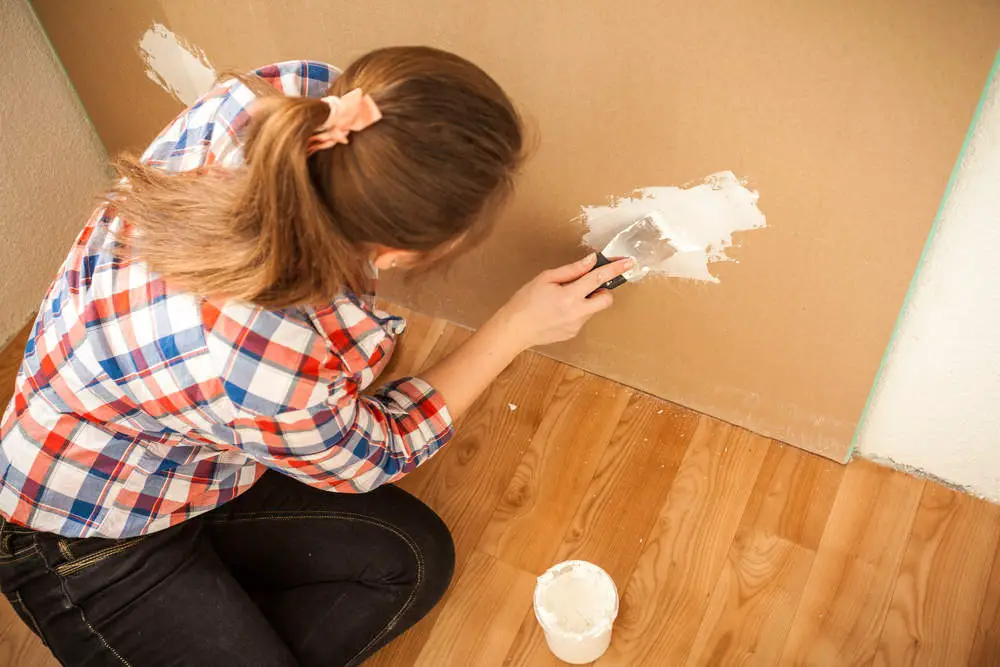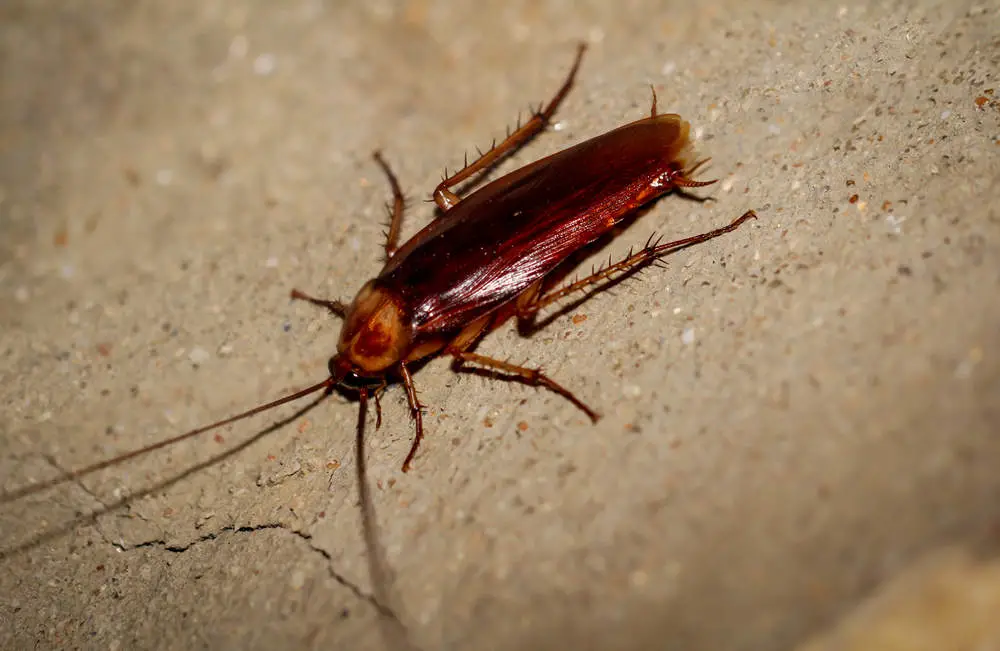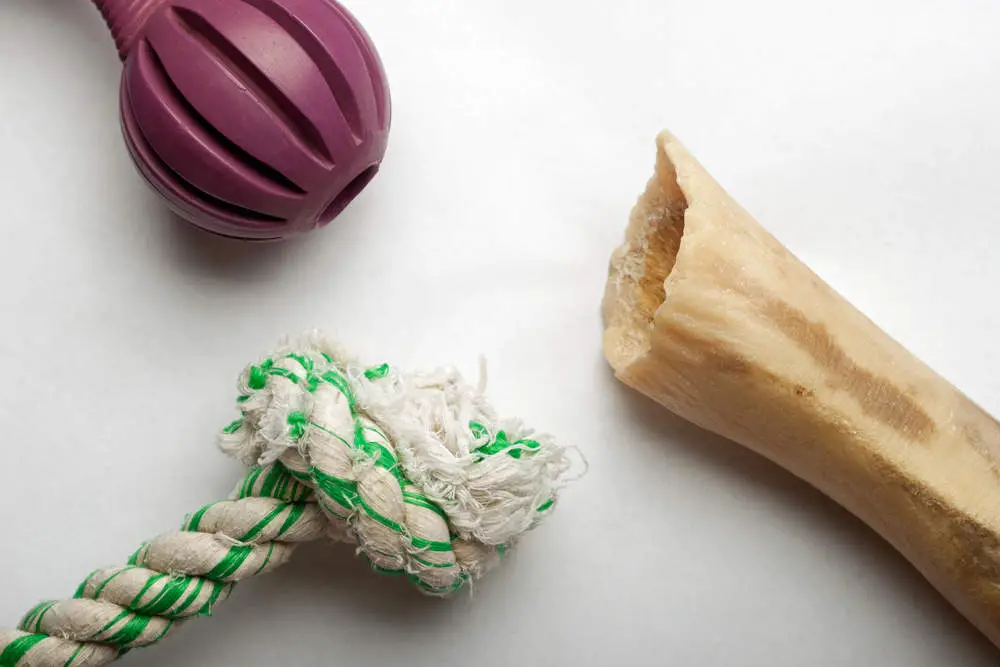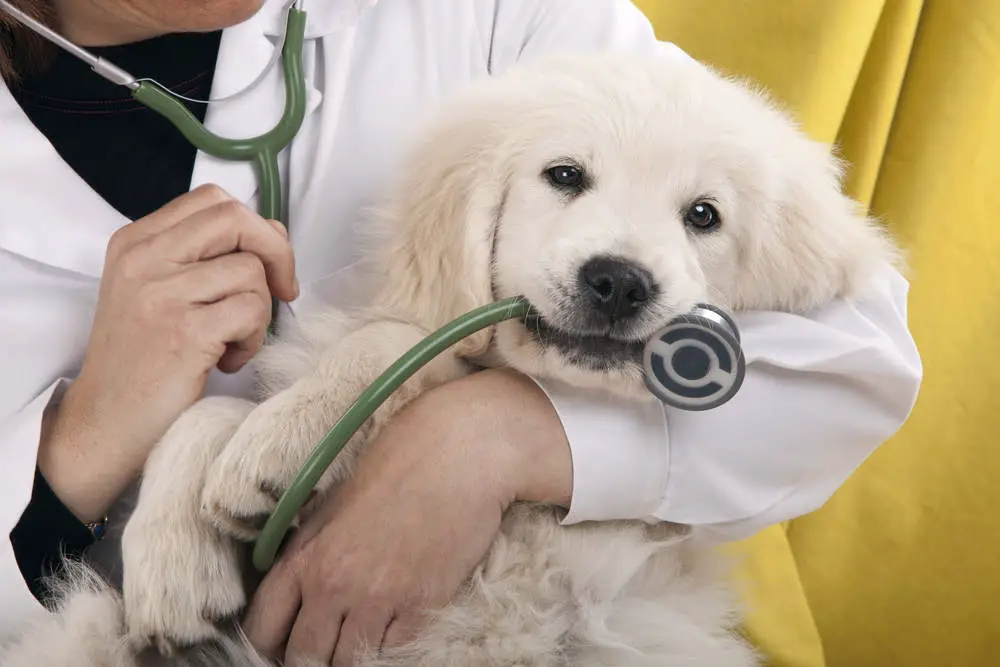
Dogs like chewing things. Usually, that isn’t much of an issue unless there is some potential for harm, as is the case if your dog chews on drywall.
So, what are some ways to protect drywall from your dog so that it doesn’t get too damaged? Here, we offer you 12 simple ways that involve either applying things on the wall or eliminating the particular behavior. Let’s take a look.
- Install Wall Protection
- Add Deterrents
- Check If There Are Pests
- Provide Training
- Change Your Furniture Setting
- Arrange Toys and Chews
- Keep Your Dog Entertained
- Remove Fear
- Set Up Exercise Times
- Consult the Vet
- Get Your Dog Tested
- Don’t Punish Your Dog
- Give Your Dog Time
- Reasons Why Dogs Eat Drywall
- What to Do If Your Dog Ate Drywall
- Final Remarks
Install Wall Protection
One such way to protect your drywall from your dog is by installing pet shields on it. These shields are usually made from durable plastic that your dog won’t be able to chew or scratch easily.
You can take the necessary measurements and cut up the panels yourself. You can also easily install and clean them whenever required.
These wall shields come in different types that you can order according to the aesthetics of the rest of your room.
Add Deterrents
Another way to protect drywall is by installing deterrents on it that will make your dog stay away from the wall. These bad-tasting and smelling deterrents will soon be able to solve the issue.
A bitter apple-based spray is commonly used to spray the wall and discourage your dog from licking or chewing it. It is also safe to use in case your dog ends up trying it out.
This apple spray has even been used as a treatment to prevent dogs from eating their own feces, so you can be sure of its success with the drywall as well.
You can also make your own deterrents at home, such as a mixture of chili and water. However, remember that this might bother your dog’s mouth if they try to taste it and might also leave stains on your wall.
If these don’t work, you can also consider buying a corrector spray that your dog can learn to associate with drywall so that they end up staying away from it.
For this, however, you will usually have to be physically present to implement it as dogs usually chew drywall when no one is around.
Check If There Are Pests

Since dogs have a different frequency when it comes to their hearing, it is possible that they can hear pests such as termites in the cavities of your wall.
There might also be larger insects or rats that are wandering about around your wall.
Your dog will probably keep chewing the drywall if they can hear these pests near your wall, either out of curiosity or frustration.
To solve this issue, you should immediately call a pest removal controller or company to help you get rid of the pests. Try not to add pest sprays as these could harm your dog and leave behind an odor.
On the other hand, it is also possible that your dog is hearing water pipes or leaks. In case of a leak, get it checked out and fixed.
Provide Training
A behavioral solution for the long term is to train your dog efficiently to prevent them from chewing drywall.
This will take some time to be effective as you will need to figure out the reasons behind the behavior and then try different ways to correct it.
Once done, however, you won’t need to worry too much about your dog repeating this behavior again.
One such method of training can be crate training. This does not mean locking your dog up in a crate but creating a safe association with it so that they can use it to calm themselves down and become responsible.
For this, you will need to make your dog as well as the crate as comfortable as possible. Fill it with your dog’s favorite toy and play games with them so that a positive association is created.
Over a few months, your dog will learn to use the crate as a safe space.
Also Read: Why Does My Dog Bite My Ankles When I Walk?
Change Your Furniture Setting
A simple trick is to move your furniture around. You can make sure that higher and taller furniture like cupboards or tables are placed against the drywall that you want to protect.
However, since dogs tend to be very clever and resourceful, don’t expect this to solve the issue completely. Combine this with other methods to help you out.
Arrange Toys and Chews

Chewing is a common habit in dogs. They usually need something to chew on and play with to keep themselves comfortable and occupied.
Without appropriate toys and chews, it is highly likely that your dog will find new things to chew on, such as your furniture and your drywall.
To prevent them from doing this, buy several soft toys and chews that your dog can bite and chew regularly.
In fact, you can teach them this habit early on by giving them a bunch of toys to play with and making sure they know what they should chew and what they should avoid.
You can also use hanging toys that your dog will have to jump and exercise for. This will keep them busy, active and away from your drywall.
Keep Your Dog Entertained
Apart from simply leaving your dogs with toys, you must also try to play other kinds of games with them.
These could involve games that require them to use their mind to figure out solutions. These puzzles can help them escape boredom so that they don’t have to resort to chewing drywall to entertain themselves.
This is also a great way to reduce their aggression as well as any hints of depression.
You can also directly play with your dog regularly so that they know that they have you around for safety and entertainment.
Also Read: Will My Dog Be Okay in Boarding Kennels?
Remove Fear
One common reason for dogs to keep chewing on drywall is fear, stress or anxiety. If they get too nervous about something, they can resort to chewing whatever they find near them.
It will be easier for you to try to find out what exactly is causing this fear and anxiety.
They can either be scared of something or someone, they can dislike having to be away from you for too long or there might have been some major change in their environment.
Try to train them to get rid of this fear and stress so that they no longer have to resort to chewing your drywall or any other important furniture or objects.
You can also designate a chew toy that they can go to in such situations, but the best solution would be to get rid of the fear itself.
Set Up Exercise Times
Your dog needs enough exercise and activity throughout the day to stay busy, occupied, happy, healthy and active.
Make sure that you are providing them with this exercise and activity time every day. This is a great way to keep your dog healthy as well as stress-free while also eliminating boredom.
It can also be a useful way to tire your dog out and to stave off all that excess energy that might otherwise be keeping them aggressive and anxious.
This excess energy can manifest itself in different ways such as chewing drywall or acting out aggressively if they do not have any other ways to get rid of it.
Set up a schedule to take your dog out for some exercise so that it can be easier for you to stick to it. How much time you allot to this can depend on your dog’s size, age and requirements along with your availability.
Consult the Vet

If none of these solutions are working for you, you should consult your vet.
They will be able to give you some potential causes behind your dog’s behavior that you may not be aware of. They can also provide some suggestions, tips and professional advice to help your dog get rid of this behavior.
A physical checkup or diagnosis might also help in this case.
Get Your Dog Tested
You should get your dog tested for any physical or psychological issues that might be causing this behavior. A diagnosis will help you plan your next course of action.
It is possible that your dog might have pica. This is a disorder that leads to a tendency or compulsion in dogs to eat inedible objects such as rocks, paper, excretion, drywall, furniture, paper and anything else.
This might be because of stress or anxiety that you can try to get rid of using some of the methods mentioned here.
However, it might also be due to health and nutritional issues that you should try to determine with professional help and then correct these issues by improving your dog’s diet and food habits.
The best thing to do here would be to first get it checked out with your vet.
Also Read: How to Stop Your Dog From Eating Rabbit Poop
Don’t Punish Your Dog
Punishing or scolding your dog each time they chew drywall will not prove to be very effective in the long run.
Therefore, this is something that you should try to avoid as much as possible.
In fact, this could end up having the opposite impact because it might increase your dog’s fear towards you, making them act out even more by chewing the wall or exhibiting other kinds of aggressive behavior.
You want to ensure that your home and your presence are entirely safe and enjoyable spaces for your dog. Punishing or scolding dogs might not be the right or healthy way to do this.
If you want to correct your dog’s behavior, trying out one or more of the aforementioned tricks will be a good idea for you as well as your dog. If nothing works, go to a professional to help you out.
Give Your Dog Time
Sometimes, your dog might just be chewing excessively because of teething issues.
Teething can lead to sore gums which can irritate your dog and cause some discomfort. To relieve themselves, they usually try to find something to chew on that can include drywall.
Once the teething process is over for your dog, they will automatically get rid of this habit and learn how to grow out of it.
While they are in the middle of this process, however, you can try to distract them with other chewing toys that will keep them away from the wall.
You can also buy any recommended teething gel to soothe their pain. Before you do this, consult your vet and do some research to figure out which gel to buy.
Reasons Why Dogs Eat Drywall
There might be several reasons behind your dog eating drywall. Let’s take a brief look at some of these causes below:
- Stress and Fear: It is possible that your dog is afraid of someone or something around them, which is why they are resorting to chewing things like your drywall to help them get rid of this fear. A change in their surroundings might also be causing this.
- Separation Anxiety: If your dog is away from you or your family for too long, they may develop separation anxiety that will lead to odd behaviors such as chewing drywall.
- Health and Nutrition Issues: If your dog is not eating properly or not eating the right things, they can develop certain health issues that can lead to chewing objects. Other physical or psychological issues might also be causing this.
- Boredom: Quite simply, your dog might just be bored and may not have anything to do, such as playing games or with toys, exercising or running around with you. This may result in chewing drywall just to have something to do.
- Attention: If your dog thinks that you are not giving them enough attention, they may try to seek it in various ways, one of which could include chewing your drywall.
- Hunting for Something: Your dog’s sensitive and keen hearing sense will probably alert them to termites and pests in your wall or any larger insect or rat passing by. Chewing the drywall might be a way to hunt for these or figure out what it is.
These are some of the main reasons behind your dog chewing and eating drywall. It would be best to consult a vet if you can’t quite pinpoint the exact cause so that you can figure out solutions easily.
What to Do If Your Dog Ate Drywall
If your dog ends up eating drywall, it would be best for you to follow some methods to get rid of this behavior, such as the ones mentioned above.
These include removing fear, eliminating boredom, installing wall protection, keeping your dog active, testing for any diseases or disorders, checking for pests, training your dog and more.
You can also consult your vet or a professional trainer or resource person who can help you figure out causes and solutions to this issue.
Of course, these are solutions for your dog, but what should you do to your damaged wall if your dog has already chewed it off or eaten it?
You can easily try to fix this yourself by gathering the required tools and material such as blocks of wood, pieces of drywall, whitewash or paint, drilling tools and more.
If you do not feel confident doing this yourself, you can call a professional to repair it. After this, you choose to cover your drywall with plastic to prevent your dog from chewing it off again.
Potential Side Effects
Are there are potential side effects that your dogs will experience if they chew or eat drywall? Will it cause them any kind of harm or danger?
Drywall tends to be made from a combination of materials such as thick paper, foaming agents, clay and other kinds of fibers and additives.
This makes it a bit harmful if your dog ends up eating some of this drywall. In any case, it is definitely unhealthy and can cause some issues for your dog.
However, this usually depends on whether your dog has any other health issues or not. It might even turn out to not have any impact at all.
Further, drywall usually does not contain any poisonous elements but if it does, it can be a cause for concern.
Some common side effects might include:
- Itchy gums
- Allergies
- Throat soreness and irritation
- Cough
- Runny nose
- Red or watery eyes
- Digestive and intestinal issues
- Sinus inflammation
If you notice any of these symptoms in your dog, you should take them to the vet to get them checked out so that you can take the necessary steps and precautions.
It might also be a good idea to take them to the vet if you notice them eating or chewing drywall, whether or not you notice the symptoms. This can eliminate any causes for concern or stress later on.
Final Remarks
In this article, we have listed down 13 different ways in which you can protect your drywall from your dog.
We have also given you some reasons behind your dog exhibiting this behavior and what to do if your dog ends up doing this.
Additionally, we listed down some side effects to see if you need to be worried.
In any case, you can try out these methods to stop this behavior and get your dog checked by a vet.
